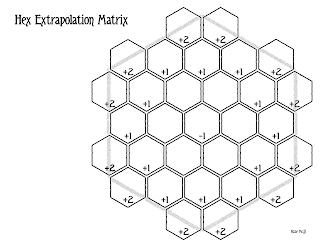 |
| Katkin from the GW 1e release of Legion of Gold. |
Stylistically, Bill Willingham can't be ruled out either, so it's possible Roslof produced the maps and this is a WIllingham piece.
Regardless, I scanned it out, narrowed the contrast band to eliminate inconsistencies from the print and scan processes, and applied a couple of filters to smooth the line-work ever so slightly, then sharpen (recorrect) the edges, which improves it as a portable image while retaining the character of the original.
From the text:
KATKINS
NO. APPEARING: 1-6
HIT DICE: 9
ARMOR CLASS: 4
MOVEMENT: 15 (sustained movement, 20 for short bursts of speed)
ATTACKS: two claws and a bite, or a weapon
DAMAGE: 1-6/1-6/J-6, or by weapon type
MUTATIONS: heightened speed and balance, imitation of thought and sound
Katkins are a mutated form of the common house cat, standing about one meter tall when walking erect (which they often do). Coloration can range from white- to orange-striped, but graystriped and brown or black solid colors are the most common. These intelligent creatures have not lost their fangs or their claws, although the claws of their manipulative forepaws are not proportionately as long as the rear ones. Katkins are rather shy and reclusive, using their heightened speed and balance to live arboreal lives, ranging amidst the upper branches of woodlands to hunt and explore. One or more katkins will construct a well concealed hut of woven vines and branches high up in the largest of trees, dwelling there during summer months. Winter quarters are typically in hollow tree trunks. Katkins have both sound and thought imitation capabilities; so, in addition to their normal body weaponry (two claw attacks and a bite per turn, each doing 1-6 points of damage), they have dangerous imitative abilities as well.Katkins have been known to possess and use small technological devices (pistols, vibro daggers, etc.). Employment of normal weapons suited to their size and strength is fairly common around the creatures' home.


